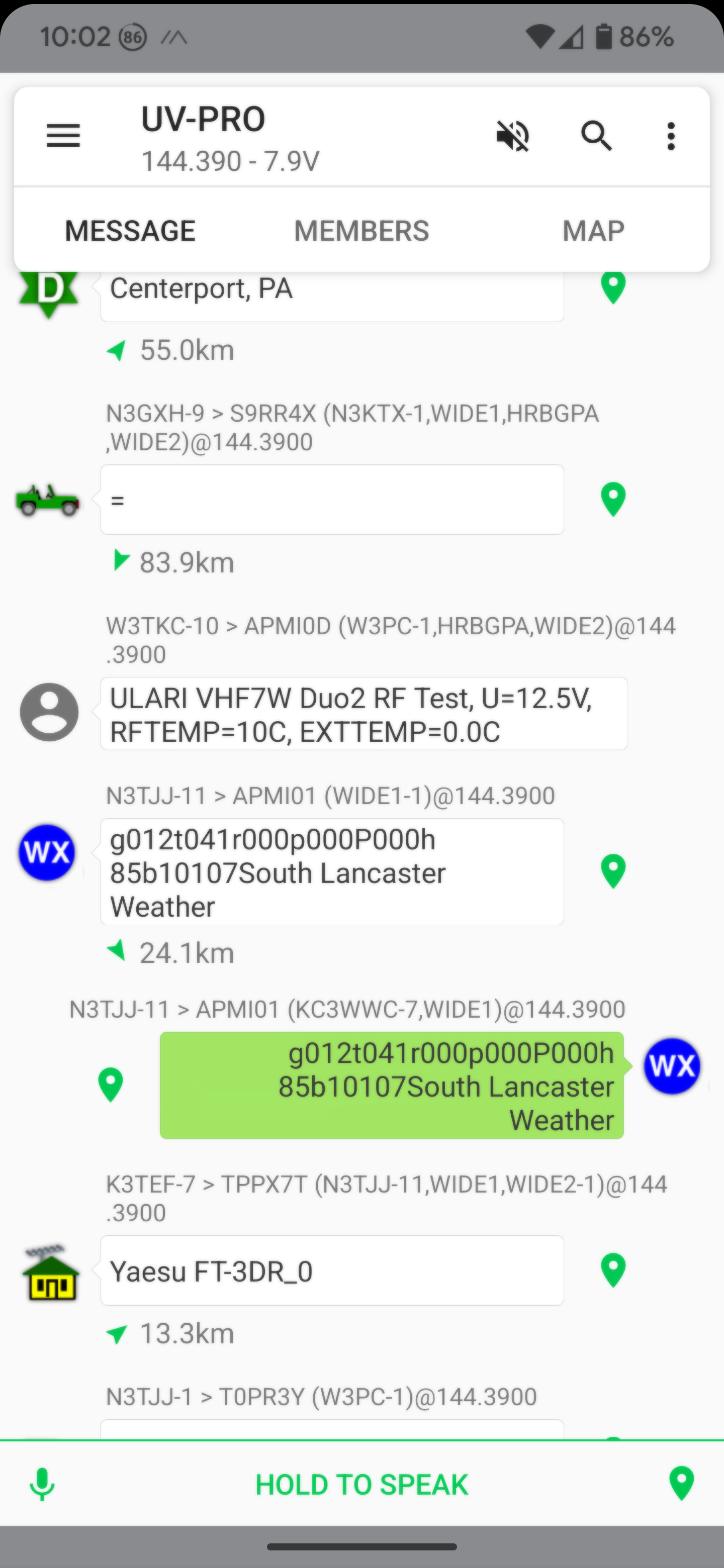Yet Another Radio
I got interested in AX.25 packet over RF,
so the Btech UV-Pro
immediately looked
like an interesting jumpstart,
when it got a firmware update that allowed
it to operate as a KISS TNC over Bluetooth.
Application Driven
HT
is the up-to-date app for interfacing with the radio.
There’s a “BTech Programmer” app,
but it is an older,
branded version of HT.
Setup
In the radio,
I’d set “General” -> “Digital” -> “Format” = “APRS”,
but the HT app kept switching it back to “BSS” any time
it connected to the radio.
It would never let me set “APRS” until I “verified”
my ham radio callsign.
It wants to do it by sending your license info to some chinese site –
no thanks.
Instead, I used a
web app
to generated an APRS code that worked in the HT app.
I enabling digital mode
in radio to make it periodically beacon my APRS location.
I set it to a fixed channel for sending APRS.
Only the HT app seems to be able
to set the beacon text for APRS.
I can send messages from radio by prefixing the message with the recipient:
TNC KISS Mode
I installed WoAD on Android,
and enabled TNC KISS on the radio.
I paired the radio to the phone via Bluetooth.
I checked the Winlink RMS map on the website to find nearby packet gateways,
and set the radio to the given packet frequency for the gateway I was trying to use.
I configured a session for the callsign and SSID of the Winlink gateway,
and started the session.
Now it’ll send and receive queued email.
There’s a log in WoAD that shows what it’s doing.
WoAD also has a terminal
which can be used for BBSes,
like KA3TKW.
I connected there
to see some messages and a BBS software from 1990!
APRSDroid
can also talk to KISS TNC
over Bluetooth. It’s a much nicer UI
than the radio or HT app.
Sometimes when switching apps,
I needed to cycle power on the radio,
but it doesn’t usually take too much
to get it going again.
